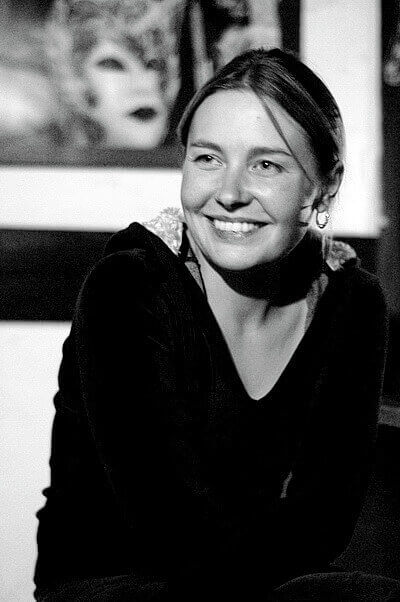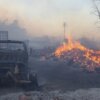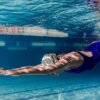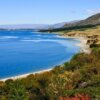Feedback, In this issue, Issue 10/2024
Will swimming in the Seine be possible?
The Olympic Games and sporting events of all kinds, if they involve water activities, are a great opportunity to tap the potential of local reservoirs. City officials are suddenly reminded that, after all, a nearby river or reservoir is the perfect place to hold them, and in the process promote the city. It becomes a problem when it turns out that the quality of the water is so poor that it calls into question the possibility of using it. And in European cities this is a rather unpleasant standard. The situation is no different in Paris for this year’s Olympics. Will swimming in the Seine already be possible this year?
The Olympics are coming up – all hands on deck
Bathing in the Seine has been banned for more than 100 years. Swimming in the river was banned under threat of a fine in 1923. due to its pollution, which poses health risks, as well as the dangers of river navigation. Successive mayors of Paris have promised to prepare the river for swimmers. In 1990. The then mayor of Paris, Jacques Chirac (even before he became president of France) declared that the river would be clean enough to swim in. His promise is to be fulfilled thirty-five years later, on the occasion of the Olympic Games. However, looking at the history of human pressure on the river, there are reasonable doubts about the feasibility of these declarations.
The long history of human pressure on the river
The Seine is one of France’s major rivers. It is more than 750 kilometers long and crosses several important urbanized areas. Its catchment area is about 76,000. km², and the population reaches 16.5 million. Despite the fact that the Seine basin occupying only 12 percent of the French territory, covers 25-30 percent. French industrial activity, 50 percent. domestic river transportation (1,400 km of navigable waterways) and 23 percent. country’s population.
The human presence and influence on the Seine dates back to the Gallo-Roman era and coincides with the development of Paris and its activities. The most critical period for the state of the river ecosystem began with the industrial revolution in the mid-19th century. Modified for shipping and port development, equipped with numerous navigational weirs, the Seine River has been heavily transformed, and has lost a large number of natural morphological structures, sandbanks, offshores and islands. It has been used as a sewage receiver since the early 19th century. The river has been subject to constant degradation and pollution associated with the growth of the urban population and industrial activity. These pressures significantly affected the hydrological, chemical and ecological functioning of the watercourse, leading to its maximum degradation between the 1960s and 1990s.
To the rescue of the Seine
Of course, the problem of river degradation did not go unnoticed. From the late 19th century, treatment plants were built in front of and behind Paris, but never in sufficient numbers to process all the wastewater from the capital. The first large-scale treatment plant was put into operation in 1938, but more effective measures were not taken until after World War II. Currently, municipal wastewater is collected in a combined sewer system and treated at five companies. Of these, the Seine Aval plant (SAV), commissioned after World War II and located 70 km below the mouth of the Marne River on the Seine in Paris, has the largest capacity – treating the wastewater of more than 5 million residents.
Very poor chemical and ecological status of the river in the 1980s. In the 1970s. prompted a small group of researchers to establish an interdisciplinary environmental research program at the French National Center for Scientific Research (CNRS). The program was launched in 1989. under the name of PIREN-Seine and is still thriving today. Thanks to significant improvements in the level of wastewater treatment, appropriate regulation and planning, and management efforts, the quality of the Seine’s water has improved significantly over the past five decades, primarily in terms of sanitation.
Will swimming in the Seine be possible again?
France, like all EU member states, is required to conduct water monitoring and assessment under the Water Framework Directive. The data published on the EEA website and in the scientific literature does not look alarming. Most of the results indicate good or moderate status of the various indicators. Surveys conducted between 2007 and 2012 at a monitoring point within the city indicated good water status for phosphate, nitrate and ammonia, and very good for oxygenation and chlorophyll. The condition of the invertebrate macrofauna was also not objectionable (good or very good grade).
But ecological status/potential is not the same as bathing water quality. This one is assessed in other places (in coastal bathing areas, rather than at so-called representative points, usually in the current of the river), at other times (during the bathing season, rather than according to the phenology of biological assemblages) and based on completely different criteria.
Thus, while ecological status or potential (as in the case of the heavily altered Seine River) is assessed based on a dozen or more parameters, including biological, physicochemical and hydromorphological, bathing water quality is based primarily on the microbiological criterion, since it is the presence of pathogenic bacteria (such as bacilli E. coli or intestinal enterococci) determines the risk to human health. Water that is suitable for fish and macroinvertebrates can be dangerous for humans. [Often the opposite also happens, when water that meets microbiological criteria and is considered excellent for bathing has a terrible ecological and/or chemical condition, but that’s a topic for a completely different story].
Paris authorities are testing the Seine’s water at 14 points. In 2022. In three of them, water quality was considered “sufficient,” but by last summer it had deteriorated. Although the Seine’s water quality has improved as a result of years of remediation efforts, none of the samples taken between June and September 2023. did not meet European standards for minimum bathing water quality. The biggest problem is E. coli bacteria from municipal pollution. Their numbers in the water increase rapidly during heavy rains, which flush pollution from the streets and untreated sewage from overflowing sewers into the river. This situation puts a big question mark over the possibility of organizing competitions in the Seine.
Restore the river to the city – a priority beyond divisions
Parisians and residents of the Ile-de-France region want to reclaim the river for recreational use as well. With the prospect of the 2024 Olympics, water quality in the Seine has become a major political issue. Expected actions include mobilizing all users of the Seine and Marne (e.g., boaters, industrialists, sports associations) to more effectively improve water quality and prevent social conflicts.
Restoring the river to residents without jeopardizing their health is one issue that should involve those responsible for the quality of the river and its use, from scientists to managers, from users to policy makers. This approach is part of a broader geopolitical context in which major cities are beginning to compete with each other in terms of attractiveness of the living environment and sustainability. Urban rivers cease to be treated as sewage receivers and transportation channels, and become an important element of nature, contributing to the attractiveness of the city and improving the quality of life of its residents. The more cities adopt such optics, the better for all of us.

 Polski
Polski







